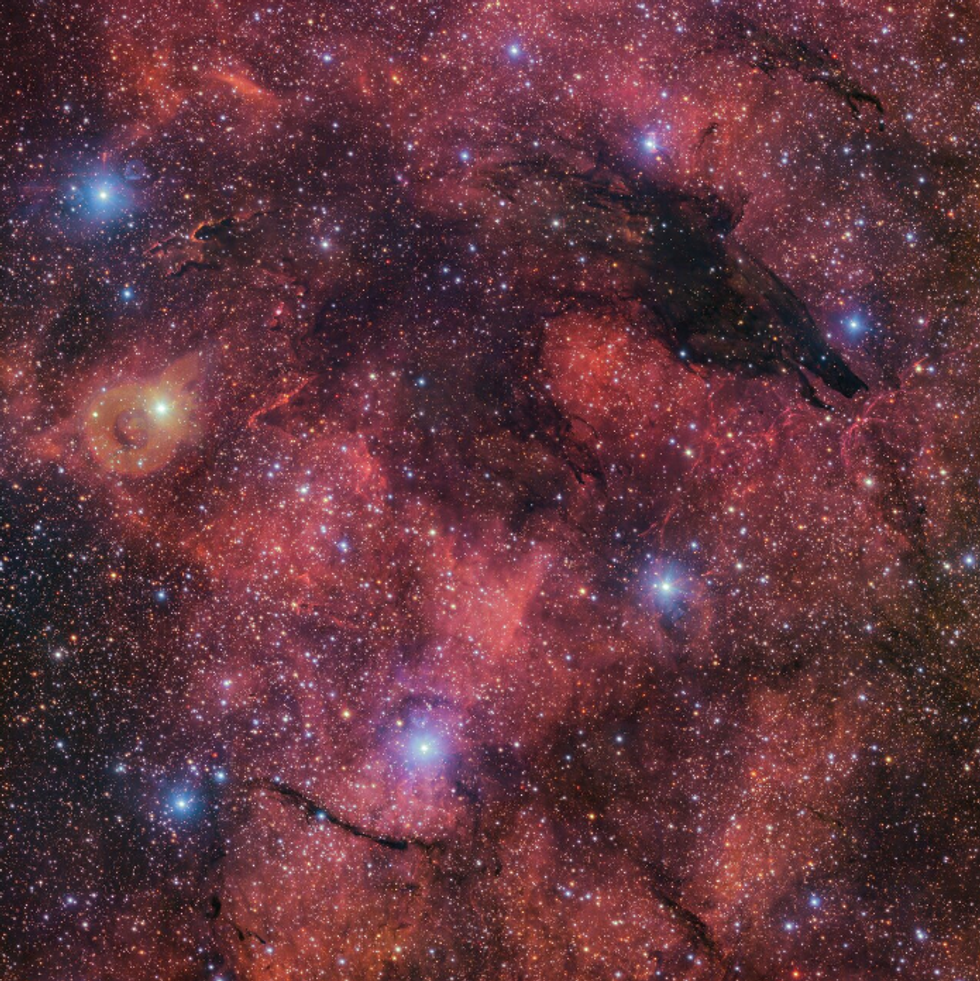Gregory Robinson
Nov 29, 2024
Will The Milky Way Galaxy Last Forever?
Grunge / VideoElephant
Scientists have spotted the spooky face of a ‘dark wolf’ lurking in space in fascinating new images.
The celestial phenomenon is a dark nebula resembling the shadowy silhouette of a wolf. Captured in fascinating detail from the European Southern Observatory’s (ESO) Very Large Telescope (VLT) in Chile, the image offers a new glimpse into this mystery region of space.
The 'dark wolf' was captured in a 283-million-pexel shot, and covers an area in the sky equivalent to four full Moons.
It’s located near the centre of the Milky Way, around 5,300 light-years from Earth and the wolf-shaped cloud is actually part of an even bigger nebula called Gum 55.

This ‘wolf’ is actually a dense cloud of cosmic dust in the constellation Scorpius, located 5,300 light-years from Earth. It looks like a black wolf crawling through space and surrounded by stars in front of an equally haunting red hue.
Some viewers may even interpret the creature as an even more frightening werewolf, with the creature's paws reaching out beyond its head.
Dark nebulae, like the Dark Wolf nebula has come to be known, absorb light, allowing only infrared radiation to pass through. The background behind the “wolf” is where stars are forming.
The Dark Wolf Nebula is made up of cosmic dust and molecular hydrogen. Dark nebulae are often where new stars form from the collapsing gas and dust clouds, Daily Galaxyexplains.
Although the images are fascinating to look at, research like this helps scientists to better understand the life cycle of stars within our galaxy.
How to join the indy100's free WhatsApp channel
Sign up to our free indy100 weekly newsletter
Have your say in our news democracy. Click the upvote icon at the top of the page to help raise this article through the indy100 rankings.
Top 100
The Conversation (0)














